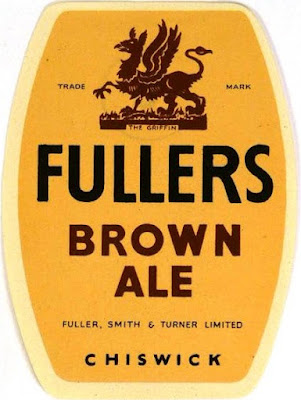The stronger X Ales had been rapidly disappearing as the 19th century rolled on. A few were still clinging on in the 1880s and 1890s. Not many, though. And only those one level up from single X. Mighty beasts like XXX and XXXX Ale were long gone.
Barclay Perkins and Truman were down to just X Ale by 1890. Fullers XX lasted a little longer, struggling on to the mid-1890s. Only at Whitbread was a stronger Mild still being brewed at the end of the century.
Initially, XL, which had been brewed since 1860, was replaced by XK in 1888. Renamed, more like, as the new beer was the same strength and had an identical recipe. XL as a brewhouse name I can understand. “L” usually stands for London. Brewers in the capital Sometimes brewed different-strength beers for the local market and what they called the “Country”. Basically, anywhere else. With beers intended for London being stronger. XL makes sense in this case.
XK is another matter entirely. The K suffix at this point usually indicated a Pale Ale. Fullers also had a beer called XK, and that’s exactly what that was. A Pale Ale. In the context of a Mild Ale, it makes no sense. But, hey, there’s no complete consistency in these sorts of designations.
The hopping rates per quarter (336 lbs) of malt are generally similar to X Ale. No shock there, as most of the examples were parti-gyled with their weaker sibling. Being stronger, however, the rate per barrel was inevitably higher.
| London XX Ale 1880 - 1899 | ||||||||
| Year | Brewer | Beer | OG | FG | ABV | App. Atten-uation | lbs hops/ qtr | hops lb/brl |
| 1880 | Barclay Perkins | XX | 1079.5 | 1024.1 | 7.33 | 69.69% | 13.38 | 4.98 |
| 1886 | Barclay Perkins | XX | 1076.0 | 1022.7 | 7.05 | 70.11% | 12.00 | 3.86 |
| 1881 | Whitbread | XL | 1076.5 | 1022.7 | 7.11 | 70.29% | 7.35 | 2.56 |
| 1885 | Whitbread | XL | 1071.7 | 1024.9 | 6.19 | 65.25% | 8.04 | 2.51 |
| 1890 | Whitbread | XK | 1069.0 | 1019.0 | 6.61 | 72.45% | 8.02 | 2.46 |
| 1895 | Whitbread | XK | 1069.3 | 1019.0 | 6.65 | 72.56% | 8.01 | 2.52 |
| 1899 | Whitbread | XK | 1064.5 | 1019.0 | 6.02 | 70.56% | 6.53 | 1.84 |
| 1887 | Fullers | XX | 1064.8 | 1023.3 | 5.50 | 64.10% | 6.64 | 1.93 |
| 1893 | Fullers | XX | 1068.4 | 1016.9 | 6.82 | 75.30% | 7.62 | 2.25 |
| 1880 | Truman | 40/- Ale | 1067.9 | 10.8 | 3.68 | |||
| Average | 1070.8 | 1021.3 | 6.59 | 70.04% | 8.84 | 2.86 | ||
| Sources: | ||||||||
| Barclay Perkins brewing records held at the London Metropolitan Archives, document numbers ACC/2305/1/579 and ACC/2305/1/584. | ||||||||
| Whitbread brewing records held at the London Metropolitan Archives, document numbers LMA/4453/D/01/047, LMA/4453/D/01/050, LMA/4453/D/01/056, LMA/4453/D/01/061 and LMA/4453/D/01/065. | ||||||||
| Fullers brewing records held at the brewery. | ||||||||
| Truman brewing record held at the London Metropolitan Archives, document number B/THB/C/161. | ||||||||












































































5 comments:
I'm guessing these beers would occupy the kind of niche, one step above a bog-standard X/mild, that a brewery's Best Bitter used to fit into (one step above a bog-standard bitter). Only weighing in at 6.5-7% rather than 4-4.5%. Boozy lot, those late Victorians!
Do you have an idea how these were named and sold in pubs? For instance, would the 1886 Barclay Perkins XX and the 1886 X in yesterday's post be sold in the same pub under different names, or were they sold under the same name to different sets of customers? I'm puzzling a bit on how these were all sorted out.
A kind of follow up to Anonymous's question: have you written a definitive list of beer styles as they were used in 19th century England? I can think of quite a few: pale ale, mild, X-XXXX, K-KKKK, porter, bitter, IPA, brown ale. Are there others?
Anonymous,
A Ale would have called Ale, XX, I'm not sure about. But I know that between the wars Barclay Perkins called theirs Best Ale.
Michael Foster,
there will be a full list in "Free!" Off the top of my head, you can add Stout, Barley Wine, Scotch Ale and remove brown Ale.
Post a Comment